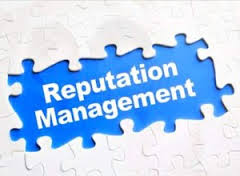Managing Threats to Corporate Reputations (Part II of III)
 Most companies do not adequately manage their reputations and the risks to their reputations. Too many companies are focused on “crisis” management, which is just another way to respond to a reputational risk that has already occurred. Such a focus is not reputational risk management but is more accurately labeled as crisis management, a reactive strategy.
Most companies do not adequately manage their reputations and the risks to their reputations. Too many companies are focused on “crisis” management, which is just another way to respond to a reputational risk that has already occurred. Such a focus is not reputational risk management but is more accurately labeled as crisis management, a reactive strategy.
Companies have to change their perspectives and focus proactively to manage reputational risks. As a first step in the process, companies have to identify factors or events that influence reputational risks, quantify the risks, and then seek to control the risks.
The compliance profession, along with several other professions, is obsessed with the term “risks.” Everyone is a “risk manager” these days, citing numerous different kids of risks and attempting to focus energy on mitigating those risks, all in the name of “risk management.” Unfortunately, in carrying out this obsession, professionals are failing to analyze and properly categorize these risks. All too often, I observe companies mixing different risks and attempting to rank or focus on these risks through comparisons that are apples and oranges.
To avoid this easy trap, compliance professionals would be well-advised to agree on how to define and measure reputational risk. The 2013 COSO framework does not mention reputational risk, nor does the Basel II international accord for regulating capital requirements for large international banks. It is easy to brush aside reputational risks by concluding that it is too vague a term to define or measure.
A company’s overall reputation reflects its reputation among important stakeholders – investors, customers, suppliers, employees, regulators, non-profit organizations, and communities in which the company operates. In addition, a company’s reputation is defined in specific categories such as product/service quality, employee relations, customer service, intellectual capital, financial performance, and commitment to environmental and social issues. A strong reputation with stakeholders in these categories will result in a strong reputation for the company.
When there is a gap between the company’s reputation and the reality of company performance, the company’s reputation may be at risk. A company’s reputation does not always accurately reflect its actual operations – the potential for damage to the company’s reputation can occur when incidents expose the company’s shortfall in various areas.
For example, a positive reputation for a major oil company may not reflect the actual risks of environmental damage from safety hazards or oil spills. Similarly, a positive reputation for a car company may be inflated with respect to its safety record given poor safety planning in future automobile designs. Companies that are regularly the subject of government enforcement actions can quickly find out the existence of a gap between their reputation and their operational performance.
A basic example of a gap that can occur is in the area of financial performance. As quarterly statements are released and a company’s financial performance falls short of expectations, you can rest assured that the company’s reputation for superior financial performance would diminish quickly.
The reverse situation can occur as well – a company may suffer reputational damage from unfair or inaccurate reporting of special interest groups or by the media.
Companies have to monitor stakeholder expectations as an important indicator of its reputation and the existence of any gaps between reputation and operational reality. Companies also have to be mindful to coordinate internally corporate actions to ensure that one group (e.g. marketing) does not create unrealistic expectations as to performance of a specific product or service.
 Managing a company’s reputation means measuring and monitoring a company’s perception. What is the company’s reputation in products, quality, compliance, financial performance, and other factors? There are a number of ways to measure the response to this question – strategic media intelligence analysis, surveys of stakeholders, focus groups, and public opinion polls.
Managing a company’s reputation means measuring and monitoring a company’s perception. What is the company’s reputation in products, quality, compliance, financial performance, and other factors? There are a number of ways to measure the response to this question – strategic media intelligence analysis, surveys of stakeholders, focus groups, and public opinion polls.
A media strategy is the most important influence on a company’s reputation and can quickly ensure that a company’s positive message is on the public’s radar screen. Social media, however, is a real challenge because of the threat that a negative stream of social interactions can quickly destroy years or months of hard work to promote a positive reputation. With the advent of social media, companies cannot sit back and just rely on a large number of positive corporate stories as insurance of its positive reputation. Attending to a company’s reputation, means attending to public reporting, social media and other influences on public perception.















